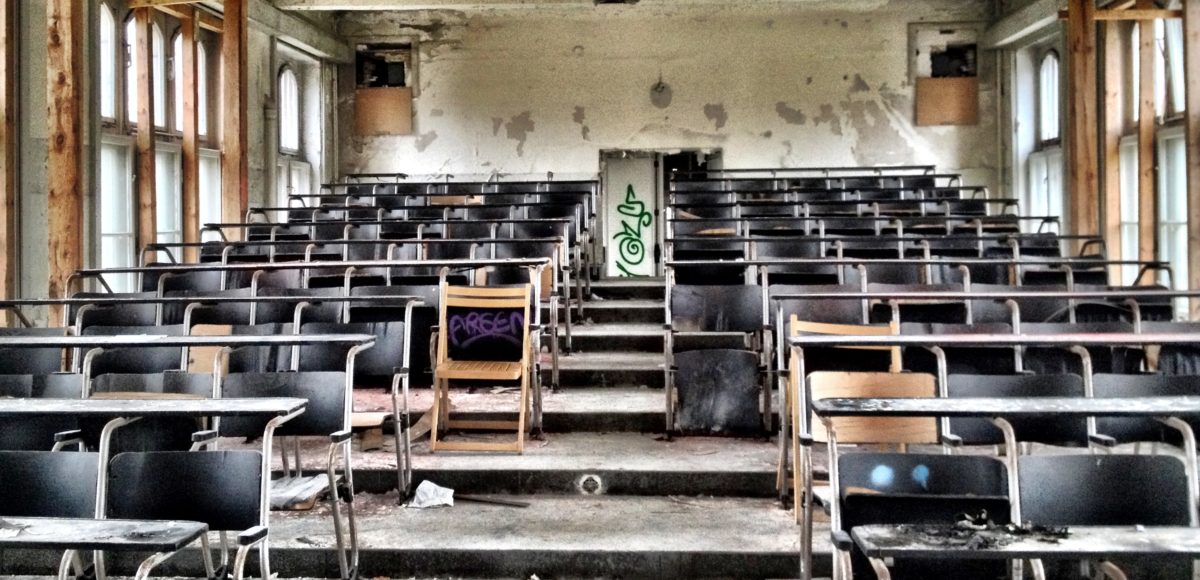Students are increasingly concerned about high costs and decreasing quality in higher education. But a major cause of those problems, the government accreditation system, is less well known. The Wall Street Journal recently reported that hundreds of schools retain accreditation despite low graduation rates and high loan default rates. And between 2013-2014, $16 billion dollars of taxpayer funded loans went to schools with graduation rates below 33%.
Presumably, this kind of financial irresponsibility and the decreasing quality of education is exactly what you would expect accreditation to prevent.
But ironically, colleges and universities are due-paying members of their accrediting associations. And thus, for the accrediting agencies, any negative action against a school takes the form of a negative action against a customer. This isn’t exactly a recipe for stringency and integrity.
In other words, accreditors have a lot of bark, but not much bite. Another underlying reason for schools rarely being disaccredited is that attending students would suddenly be ineligible for financial aid, and subsequently need to move to a new institution (while one of the options in their area has just been shut down). Hence, true accreditation removal—not just being put on probation—is uncommon. And because the removal of accreditation is unthreatening in principle, the process doesn’t enforce quality or incentivize improvement in schools.
How is it that the accreditation system has strayed so far from its goals, and become a smokescreen for deteriorating quality in higher education?
The first step in understanding the problem with the accreditation system is the connection between accreditation and federal funding, mentioned above. Only the federal government approves accreditation agencies, and these agencies direct the yearly 120 billion dollar flood of federal funding to accredited institutions alone. The Department of Education, nevertheless, has the gall to allege that accreditation is voluntary.
This funding mechanism severely limits the ability for new institutions to get off the ground. When so many students require substantial federal aid to receive a degree, it is incredibly difficult for an institution to open its doors without this revenue stream.
One of the major barriers to a new school becoming accredited is this same dilemma: the school is essentially required to be financially solvent before it has even opened its doors. This has led to some new institutions purchasing an already accredited institution, so that the purchased institution’s accreditation can be inherited. Purchasing accreditation this way amounts to a 10 million dollar burden on ambitious entrepreneurs in education.
The effects of these constraints are obvious: there are few, if any, innovative educational institutions entering the market and educational options for students are constrained. Students are thereby placed at a disadvantage by the accreditation system from the start, because it undercuts the possibility of access to a truly dynamic educational market.
In addition to the options available to students being curtailed by a stagnant market and flawed accreditation system, the seal of approval granted by these agencies has a terrible effect on student decisions. Under government accreditation, colleges do not have to earn a reputation by surpassing industry standards and beating competition. Instead, an institution is evaluated and simply granted a reputation if it meets certain basic criteria. Accreditation guarantees the existence of a hollow shell instead of a high quality product and grants that hollow shell a seal of approval.
It is no surprise that Gallup, in speaking with almost 90,000 people across the country, found that 51 percent of Americans regret at least one of their college education choices. 36 percent of Americans would have changed their major, 28 percent said they would choose a different college or university, and 12 percent would have opted for a different degree program.
In a system where colleges earned their reputations, that reputation would provide students with the information needed to choose the best school in regard to their major or degree program. It’s possible that one out of every two of us, that 51% of Americans, could avoid making regrettable decisions about college.
But more than just confusing students about where they should go to college, accreditation affects students in other ways as well. According to a study by the Association of American Colleges and Universities, students are literally deluded about their capabilities—even after experiencing firsthand the lack of rigor characterizing higher education today, as pointed out by research like the “Academically Adrift” study, which suggests that students think they are well-prepared to enter the workforce. Yet less than 30% of employers agree (and in crucial places such as ability for “written and oral communication”).
Accreditation’s seal of approval really masks and legitimizes the underlying degradation of higher education—and the lack of any real reputation—such that students are left in the dark about the quality of their education. Consequently, students think they are well-prepared, while a vast majority of employers question whether they can even read or write sufficiently for employment.
This might make higher education sound like some Trump University scam. Ironically, that kind of problem is exactly what people tend to worry about when accreditation gets questioned. There is an important sense, though, in which the accreditation system perpetuates a similar sense of false security for students—just like such scams! Students are set up by the accreditation system to blindly plunge into a supposedly high quality and necessary college education. It is no surprise that we are beginning to become disillusioned, with nearly 4 in 10 students regretting even attending college given the debt that they have.
In summary: the accreditation system’s control of finances curtails educational options and constrains the market, while the system itself deludes students, disrupts their ability to make rational decisions about where to go to school and, all the while, disguises the decreasing quality of institutions.
But students don’t always see these effects. The seal of approval from accreditation agencies—and financial aid prospects warranted by the seal—allow students to feel as if any approved institution is high quality and worth the financial risk.
In the end, the accreditation system is a government sponsored cartel through which the government approves the accreditation agencies, the agencies wield the flood of federal financial aid, the schools pay the agencies, the agencies constrain the market and hide degradation—the students, in the end, suffer.
On the bright side, however limited, there is encouraging innovation taking shape in higher education. Institutions such as Western Governors University show that, rather than paying tens of thousands of dollars per semester, an undergraduate education can cost less than a single semester at private or even public institutions. Yearly tuition at WGU clocks in at less than 6,500 dollars a year.
In addition, the continuing revolution in free, online content from top professors and universities truly makes one wonder what a low-cost and high quality education infrastructure could look like. Why would we continue to ignore this vision of the future of education, in favor of the false promises and dismal results of a broken system? To encourage these alternative trends and this beneficial vision, something needs to be done about accreditation—its assault on students and their ability to navigate the education landscape.
The new PROSPER legislation introduced by the House of Representatives, at best, shows basic awareness of the problems that higher education and students face. The legislation is far from ideal. A welcome addition would be something to the effect of the HERO Act, which planned to send the issue of accreditation back to the states. But, to really address this government-sponsored accreditation cartel, the best solution would be to sever the tie between the government and accreditation agencies entirely, preventing them from wielding the power of the purse.
Rather than allow the government to approve accreditation agencies and mark this approval with exclusive access to federal funding, accreditation should be a truly voluntary and private affair (as it used to be, before the funding catch). A voluntary system would encourage educational institutions to compete against each other and to demonstrate the value they provide, thereby attracting students, tuition dollars, and privately funded loans. Such a system would be vastly superior to the current process in which institutions simply check off boxes on some government approved checklist, then head off to claim the reward of federal aid.
By getting the government out of accreditation, the role of an earned reputation would resurface as an incentive for quality and as a mechanism for competition. Enough with the credibility cartel. For students, the idea of taking out loans and choosing a school in the first place would be put in a whole new light.
Gone would be the days where—supported by a government-facilitated sense of false security—a student might simply receive acceptance from a school with a superficial seal of approval and subsequently gobble up whatever financial aid (and loans) were needed. We could improve in two directions at once: reestablish innovation and competition between schools to the financial and qualitative benefit of students, while also re-empowering students to become active and rational agents when it comes to making decisions about their individual pursuit of education.
Modified creative commons image courtesy of Flickr user Jan Bommes.





